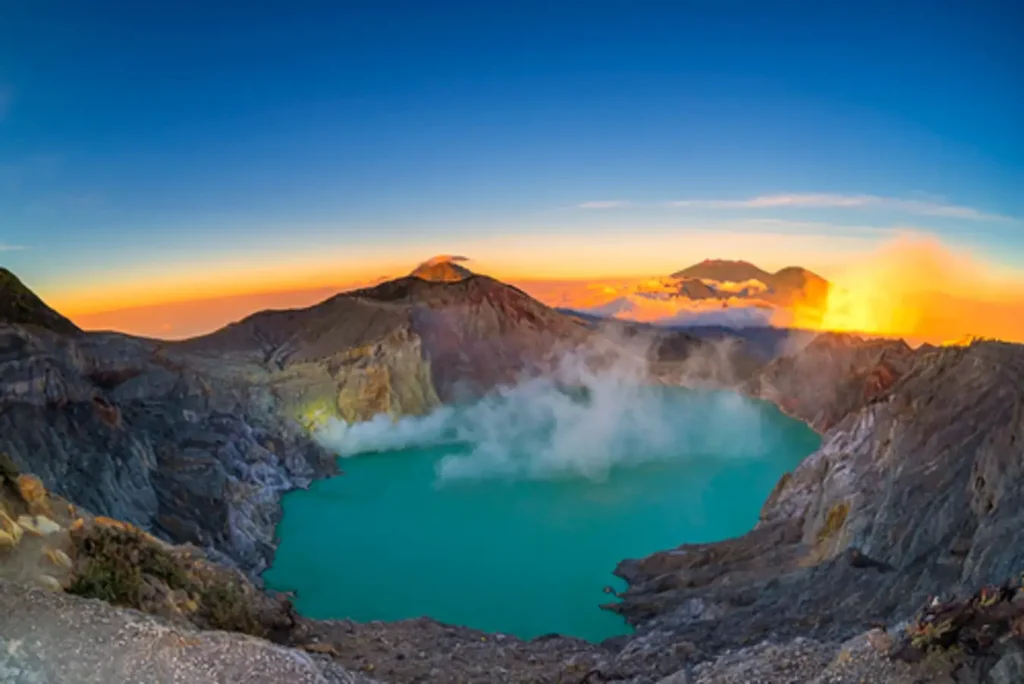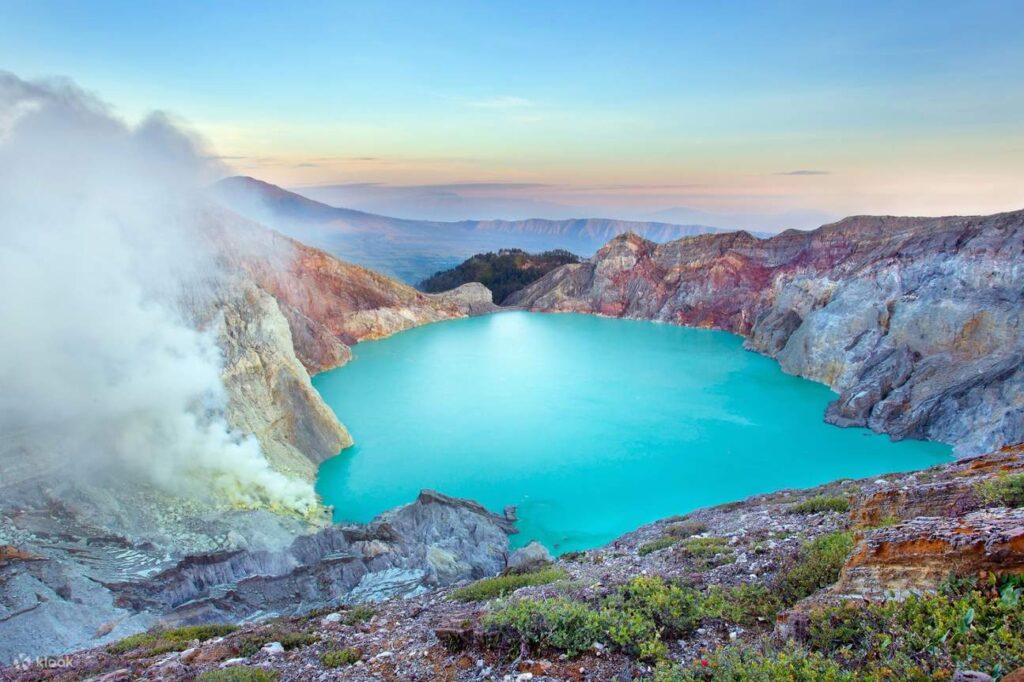Indonesia’s Ijen volcano is an incredible destination for adventurous travelers. However, its unique climate can be challenging to navigate, especially for US travelers who are unfamiliar with the region. In this guide, we’ll provide you with valuable insights into the temperature variations at Ijen volcano, including the temperature at the volcano and its crater. We’ll also offer tips for US travelers to make the most of their experience at this remarkable destination.
Key Takeaways
- Understanding the temperature variations at Ijen volcano is crucial for US travelers planning a trip to the region.
- Ijen’s unique climate can be challenging to navigate, but with the right information, US travelers can prepare accordingly.
- The temperature at Ijen volcano varies throughout the year, so choosing the right season to visit is important.
- Knowing the temperature at the Ijen crater area is essential for a comfortable and safe experience.
- By following the tips outlined here, US travelers can make the most of their trip to this incredible destination.
Average Temperature in Ijen
Before embarking on a trip to Ijen volcano in Indonesia, it’s important to understand the average temperature throughout the year to ensure a comfortable and enjoyable experience. The weather conditions at the volcano can vary greatly depending on the season, so being prepared is essential.
The average temperature in Ijen is around 68°F (20°C), with slight variations throughout the year. The summer months of June through August are the coolest, with temperatures averaging around 64°F (18°C). The hottest period is from October to April, with average temperatures reaching 72°F (22°C). It’s worth noting that the temperature at the summit of the volcano is often colder than the surrounding areas, with an average temperature of around 57°F (14°C).
The weather at Ijen volcano is also influenced by the monsoon season, which runs from November to March. During this time, the rainfall in the area increases, and the weather can become choppy. Travelers are advised to avoid visiting the volcano during this period to avoid any inconvenience.
In general, the best time to visit Ijen volcano is during the dry season from May to September. The weather is mild, and the skies are clear, allowing for excellent visibility when exploring the volcano. Regardless of when you plan to visit, it’s always a good idea to check the weather forecast to ensure a safe and pleasant trip.
Navigating Ijen’s Climate: Tips for US Travelers
As a US traveler venturing to Ijen, it’s essential to understand the climate of the region. The temperature can vary significantly, so it’s necessary to prepare accordingly. Here are some practical tips to help you navigate Ijen’s climate.
Ijen Hike Temperature
The temperature during hikes and treks in Ijen can be quite cold, particularly during the early morning hours. It’s crucial to dress in layers and wear comfortable, warm clothing. This will ensure that you remain comfortable throughout the hike, regardless of the temperature fluctuations.
Ijen Temperature at Night
The temperature at night can also be quite chilly, so make sure you pack warm clothes to stay cozy. Temperatures can drop to around 50°F (10°C) at night, so it’s best to be prepared for the cold weather.
Ijen Temperature in Celsius
Indonesia uses Celsius as the local temperature unit, so it’s important to familiarize yourself with this measurement system. It can take some getting used to, but understanding Celsius will help you interpret local weather forecasts and temperatures more accurately.
Understanding the Temperature at Ijen Crater
One of the highlights of a visit to Ijen volcano is exploring the stunning Ijen crater. However, before embarking on this adventure, it’s important to understand the unique temperature conditions at this volcanic formation.
The temperature at Ijen crater varies depending on the time of day and weather conditions. In general, the temperature is cooler in the early morning and late afternoon, and warmer during the middle of the day. The average temperature at the Ijen crater is around 14-18°C (57-64°F), but it can drop to as low as 5°C (41°F) at night.
The temperature at Ijen crater is influenced by a combination of factors, including elevation and wind. As the crater is located at an altitude of 2,799 meters (9,183 feet), the air temperature is naturally cooler. Additionally, the strong winds that blow across the crater can also lower the temperature.
| Best Time to Visit Ijen Crater | Temperature Range |
|---|---|
| Early morning | 12-16°C (53-61°F) |
| Late afternoon | 14-18°C (57-64°F) |
| Nighttime | 5-10°C (41-50°F) |
If you’re planning to visit the Ijen crater, it’s recommended to dress in layers to accommodate the changing temperature conditions. Additionally, be sure to bring warm clothing for the nighttime temperature drops.
“The temperature at Ijen crater is around 14-18°C (57-64°F), but it can drop to as low as 5°C (41°F) at night.”
It’s also important to note that the temperature at the Ijen crater is typically measured in Celsius, rather than Fahrenheit. As a US traveler, it may be helpful to familiarize yourself with Celsius units to accurately gauge the temperature and prepare accordingly.
Overall, with an understanding of the unique temperature conditions at Ijen crater, US travelers can plan their visit to this incredible destination with confidence.
Conclusion
In conclusion, understanding the temperature variations at Ijen volcano in Indonesia is crucial for US travelers planning to visit this unique destination. By following our comprehensive Ijen temperature guide, travelers can better prepare for their trip and make the most of their experience.
Knowing the average temperature in Ijen throughout the year is important for planning purposes. US travelers should be aware of the different seasons and how they can affect the overall weather conditions at the volcano. This knowledge will help them pack accordingly and ensure a comfortable experience.
Navigating Ijen’s climate can be challenging, especially during hikes and treks. US travelers should be prepared for the temperature at night and the use of Celsius as the local temperature unit. By following our practical tips, travelers can stay safe and comfortable during their exploration of Ijen.
Optimizing Your Visit to Ijen Crater
Understanding the temperature at Ijen crater is essential for optimizing your visit. The temperature here is influenced by various factors, such as the time of day and weather conditions. It’s best to visit the Ijen crater in the early morning when temperatures are cooler and the air is clearer for better views.
Overall, our Ijen temperature guide provides valuable insights for US travelers planning to visit this remarkable destination. By knowing what to expect and how to prepare for Ijen’s unique climate, travelers can have an unforgettable experience in Indonesia.
FAQ
What is the average temperature in Ijen?
The average temperature in Ijen varies throughout the year. In general, the temperatures range from 20 to 25 degrees Celsius (68 to 77 degrees Fahrenheit) during the day and can drop to around 10 degrees Celsius (50 degrees Fahrenheit) at night.
What should I pack to handle the temperature during hikes in Ijen?
When hiking in Ijen, it is advisable to pack layers of clothing to handle the temperature variations. Wearing lightweight, breathable clothing is recommended for daytime hikes, while warmer layers such as a jacket or sweater may be needed for cooler temperatures at night.
What is the temperature like at night in Ijen?
The temperature at night in Ijen can be significantly cooler than during the day, often dropping to around 10 degrees Celsius (50 degrees Fahrenheit). It is important to come prepared with warmer clothing to stay comfortable during nighttime activities.
How is the temperature at the Ijen crater different from the surrounding area?
The temperature at the Ijen crater can be slightly cooler than the surrounding area due to its higher altitude and the presence of sulfuric gas emissions. It is advisable to dress in layers and come prepared for potentially cooler temperatures when exploring the crater.
Should I bring a thermometer to measure the temperature in Ijen?
While it is not necessary to bring a thermometer, some travelers may find it interesting to have one to measure the temperature in Ijen. Local temperature units in Indonesia are usually in Celsius, so it may be useful to have a thermometer that displays readings in Celsius if you are interested in tracking the temperature during your visit.





